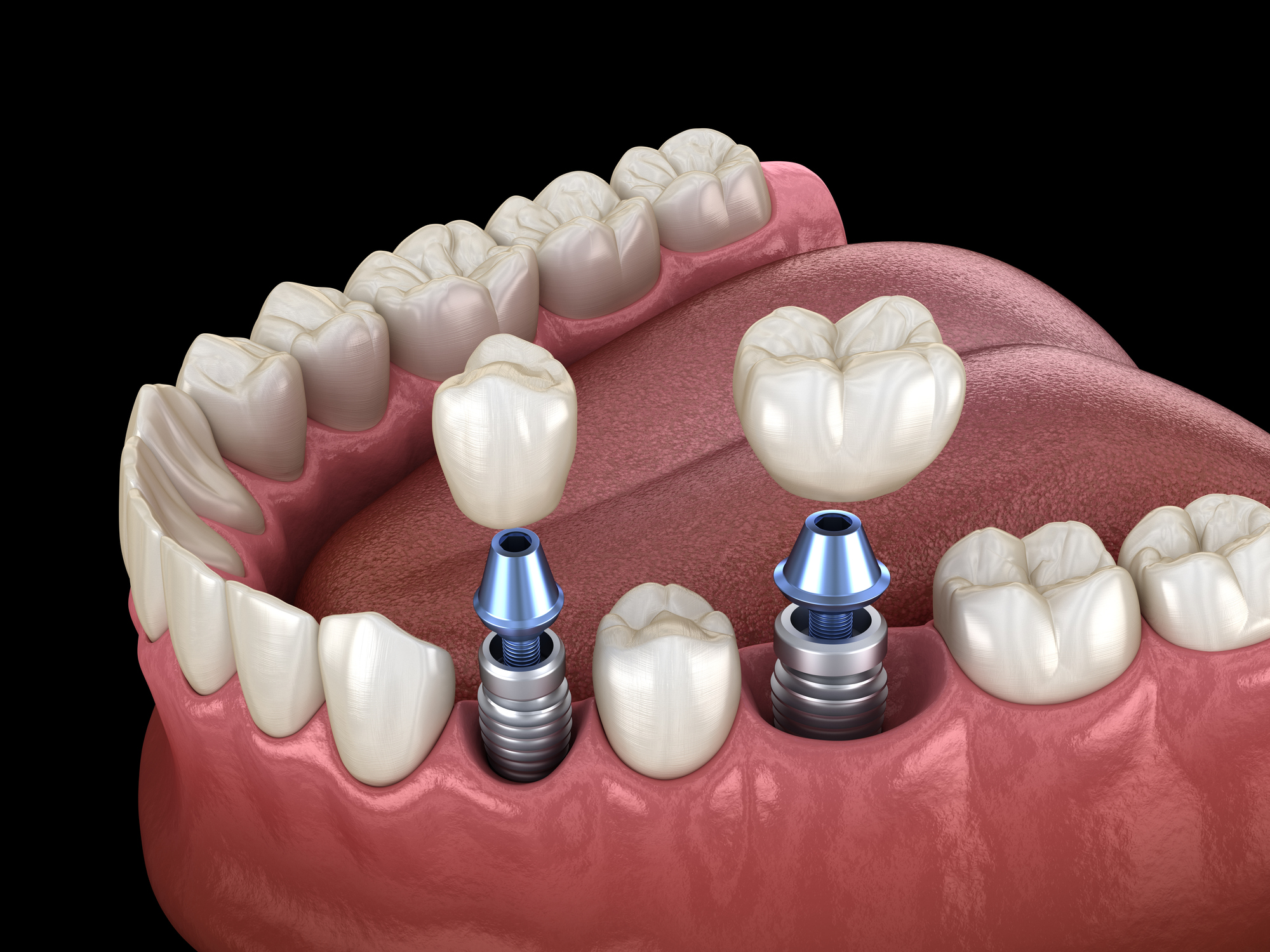The Greatest Guide To Dental Sense
Table of ContentsThe Buzz on Dental SenseThe Facts About Dental Sense RevealedDental Sense Can Be Fun For AnyoneThe Dental Sense PDFs
are medical devices surgically dental implanted into the jaw to bring back an individual's capability to eat or their look. They supply assistance for synthetic (phony) teeth, such as crowns, bridges, or dentures. When a tooth is lost because of injury or disease, an individual can experience complications such as fast bone loss, defective speech, or changes to chewing patterns that result in pain.Oral dental implant systems include an oral implant body and oral implant abutment and may likewise include an abutment addiction screw. Wisdom tooth cavity. The dental implant body is surgically inserted in the jawbone instead of the tooth's root. The dental implant abutment is generally connected to the dental implant body by the abutment addiction screw and expands via gum tissues right into the mouth to support the attached synthetic teeth
(https://www.merchantcircle.com/dental-sense-miami-fl#tips)Structure of The Dental Implant System choosing oral implants, talk to your oral service provider regarding the prospective advantages and risks, and whether you are a prospect for the treatment. Things to take into consideration: Your overall wellness is a crucial variable in identifying whether you are a great candidate for dental implants, just how long it will certainly take to recover, and for how long the implant may remain in area.
Smoking might affect the healing process and reduce the long-term success of the implant. The healing process for the dental implant body might take several months or longer, during which time you usually have a short-term joint instead of the tooth. the oral implant treatment: Carefully adhere to the dental health directions provided to you by your oral provider.
Dental Sense Things To Know Before You Buy
Implant failing can lead to the requirement for one more procedure to take care of or change the implant system. Recovers the capability to eat Restores cosmetic appearance Assists maintain the jawbone from reducing because of bone loss Protects the health and wellness of the bordering bone and gum tissues Helps keep nearby (close-by) teeth steady Improves lifestyle Damages to bordering all-natural teeth throughout implant positioning Injury to the surrounding cells during surgery, such as sinus perforation Injury throughout surgical procedure (as an example, fracture of bordering jawbone) Poor function, such as seeming like the teeth do not bite with each other typically A sensation that the tooth hangs or twisting in place arising from a joint screw loosening Implant body failing (looseness of the dental implant body) as a result of systemic infection, which may be a lot more likely in individuals with unchecked diabetes mellitus because of local infection in bone and gum tissues sustaining the implant body because of postponed recovery, which may be much more likely in people that smoke Trouble cleaning up the gum tissues around the dental implant, resulting in poor oral hygiene Unattended periodontal illness Post-surgical feeling numb because of nerve impingement or damages Always alert healthcare companies and imaging technicians that you have dental implants prior to any magnetic resonance imaging (MRI) or x-ray treatments.
FDA is not familiar with any type of negative occasions reported for MRI or x-ray procedures with dental implants. Oral implants systems are usually made of products that adhere to international consensus criteria of the International Organization for Standardization (ISO) or ASTM International. These criteria have details of what makes a risk-free material.

A dental implant is a structure that changes a missing tooth. With screw-like gadgets, the specialist inserts an implant into the jawbone, and it works as a support for a synthetic tooth, called a crown. A tool called a joint attaches the fabricated tooth to the oral implant. The crown is tailor-made to fit the individual's mouth and match the color of their teeth.
Not known Facts About Dental Sense
Some people are not eligible for dental implant surgical procedure. It is for dental specialists to operate individuals with: intense illnessuncontrollable metabolic diseasebone or soft cells disease or infectionIf these issues are solved, an individual can have the surgery. In, dental cosmetic surgeons refrain from running on individuals with: If people with any one of the above go through oral implant surgical procedure, there is a higher danger of the implant stopping working.

Oral implant surgery is a customized process. It's not the exact same for everyone. But the adhering to gives a basic review of what you can anticipate your dental professional, oral specialist, periodontist or prosthodontist to do: Put get more the dental implant operatively. Provide you time to recover. Attach the message and final crown, bridge or denture.
Next, your specialist will carefully position the dental implant into your jaw. If your dental implant is near the front of your mouth, your dental expert will make a temporary tooth for you to wear up until you recover.
Some Known Questions About Dental Sense.
During the healing stage, your jawbone must fuse to the oral implant. This process can take anywhere from three to 9 months.
When your implant heals, your dentist can connect the abutment (tiny port article) and your last remediation (crown, bridge or denture). This usually takes concerning one hour to complete and may need a 2nd small surgery. You shouldn't really feel any type of pain throughout your dental implant procedure since your supplier will make use of medication to numb your gum tissues.